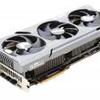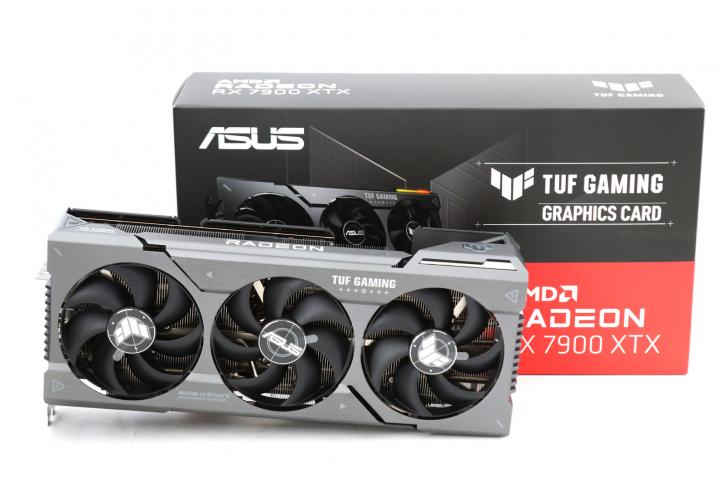Introduction
ASUS TUF Gaming Radeon RX 7900 XTX OC Edition review
Optimized to be far more silent
ASUS has emerged on the scene with its TUF model Radeon RX 7900 XTX, which we review. The product has been factory tweaked and tailored to fit, and it is quite stunning just by looking at it. These massive 3.6-slot parts are able to boost their clock speed a notch higher relative to the reference design. We've been surprised that this product is fitted with triple 8-pin power inputs. No custom SKU has been released with a USB Type-C port, and the ASUS TUF is no exception. Instead of multiple HDMI ports, gamers will get three DisplayPort ports and a single HDMI. A secondary BIOS mode is very interesting, though as it offers a silent mode, and this, indeed is the first 7900 product that offers a really silent alternative. . We'll address that in our tweaking segment of the article -- we have the flagship Radeon RX 7900 GPU inside the XTX, which uses the latest rDNA3 GPU architecture and has 24 GB of graphics memory. When tested against the GeForce RTX 4080, the card holds its own. You get a massive 24GB of GDDR6 memory, the same as the RTX 4090 at far lower cost. The clock speed, however, is a bit convoluted, as we will explore in more detail below. Right now, memory capacity is the most crucial metric to highlight. Despite employing 24GB of memory like Nvidia's current flagship, the RTX 4090, AMD's RX 7900 XTX employs slower GDDR6 memory. Memory rates that are faster are generally better. However, this is not always the case. Because of the RX 7900 XTX's huge 384-bit memory bus, the card's memory is not as quick as other options is has more bandwidth thanks to an infinity cache. Two cards are launched for the initial launch: the 7900XT and 7900 XTX. Both are based on the Navi 31 GPU, which has RDNA3 architecture and is based on a new chiplet design. Yeah, chiplets man, and it's a big GPU, alright. The die area of the Navi 31 graphics processor chip is 300 mm2. AMD confirmed that its RDNA 3 graphics processing units (GPUs) have a huge performance boost. AMD will highlight some of the essential parts of the RDNA 3 GPUs, such as:
By disclosing its unique board designs first, Asus made history among board partners. The manufacturer used the massive cooler from the corresponding RTX 4090 TUF Gaming model. For example, the design has a thickness of 3.6 expansion slots and a length of 352.9 mm. A card this big seems excessive, given the low power requirements of the RDNA 3 card, but Asus claims that its customers will have greater overclocking freedom and yield better acoustics. AMD promotes a game clock of 2.3GHz for the RX 7900 XTX, which is the speed at which you can anticipate the card to operate while playing games. However, ASUS defaults that value towards 2.4 GHz, with 2565 MHz for the boost clock on a 320W TGP. Admittedly, these are quite minor improvements, but every little bit counts. TUF Gaming cards have three 8-pin PCIe power ports rather than two. The USB Type-C port on the rear has been removed, making them noticeably different from AMD's reference design beyond their larger dimensions. The TUF Gaming branding guarantees high-quality components and sturdy construction, such as a robust die-cast frame into which the aluminium backplate and shroud have been melted for further strength. To dissipate heat more efficiently, the new cooling design uses Axial-tech fans to propel more airflow around the edge of the backplate, increasing the overall cooling area by 20%. Simply flipping a switch on the card's Dual BIOS allows you to quickly choose between performance and quiet modes or dive further into GPU Tweak III settings. The card defaults to performance mode, which brings 2~3% additional performance compared to the reference cards. The Radeon RX 7900 XTX will use a standard 8-pin PCIe connector rather than the divisive 12VHPWR port and as stated, will require three of these connectors. One HDMI 2.1 port and three DisplayPort 2.1 ports are provided for connectivity. The TUF Gaming Radeon RX 7900 XTX has 6,144 stream processors, and 24 GB of GDDR6 VRAM with a 384-bit memory interface for the best possible performance in 4K gaming. But let's fire up the review.


